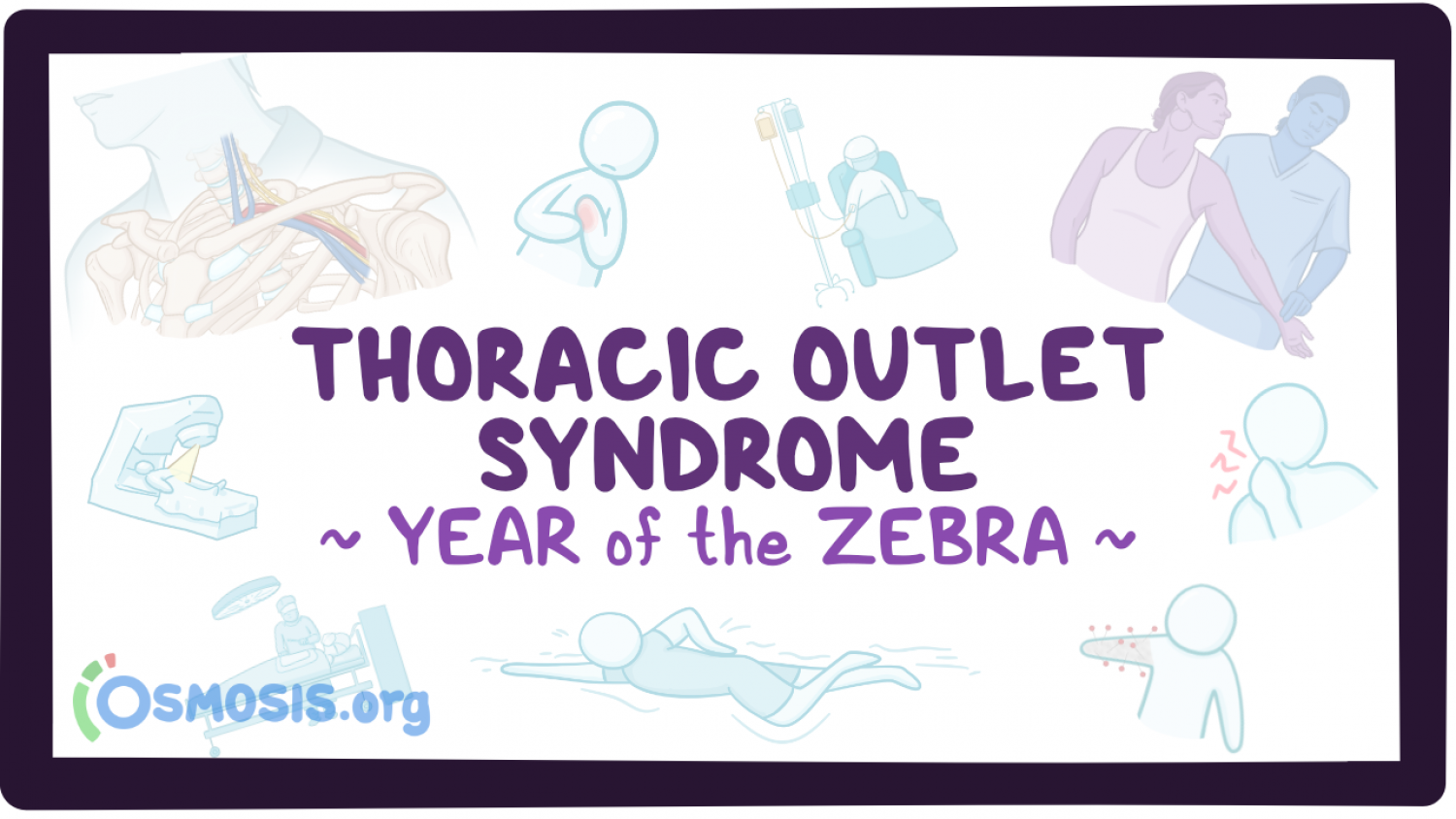
Rare Disease Education: Thoracic Outlet Syndrome
Editor: Kelsey LaFayette, DNP, RN, FNP-C
"When you hear hoofbeats, think of horses, not zebras,” is a common saying in medical education that means you should think of common conditions first, instead of rare ones, in making a diagnosis. “Rare” is a relative term though and about 7,000 rare, or "zebra," conditions affect more than 350 million individuals worldwide. Although these conditions collectively affect an enormous number of people, each of these conditions individually is rare enough that it can be difficult to secure the resources to study them and to develop treatments and cures. Likewise, awareness of rare conditions may be low and health care professionals may not be familiar with their signs and symptoms making it more difficult to reach a correct diagnosis and provide effective treatments.
To increase knowledge about rare conditions, Osmosis and the National Organization for Rare Diseases (NORD) have collaborated on an initiative to bring education and awareness to the public. We are excited to be a part of this initiative because we believe everyone deserves quality health care, no matter how rare their condition.
Zebra of the Week: Thoracic Outlet Syndrome
A traffic jam on a busy highway is a universally unpleasant experience. One possible cause of such a bottleneck is the narrowing of the road. This reduction of lanes causes essential goods and messages that used to flow through the path easily to be impeded, and can lead to downstream negative effects.
This is similar to the mechanisms that cause the week’s zebra, thoracic outlet syndrome. In our bodies, nerves and blood vessels travel from the neck to the arm through a narrow space called the thoracic outlet. Sometimes, due to various reasons like muscle tightness or abnormal bone structures, this space becomes even narrower.
This "bottleneck" can compress the nerves and/or blood vessels. If the nerves are affected, this usually leads to symptoms like pain, numbness, or tingling in the arms and hands. If the veins are affected, then the usual presentation is arm swelling, bluish discoloration, and a feeling of fullness in the arm. If the arteries are affected, then this presents as coldness, numbness, pain, and white discoloration, sometimes accompanied by cramping of the forearm and hand, especially with activity. Treatment can start conservatively but often requires surgery to widen the area of passage of the affected structures, and could include removal of the first rib.
To learn more about the diagnosis and treatment of thoracic outlet syndrome, watch the dedicated Osmosis video on YouTube and Osmosis.org
Meet Mark Norwich
Mark had found his passion playing football in high school. He put in the effort and trained long and hard with the goal of winning a championship with his team. Then, a blood clot in his arm led to the diagnosis of thoracic outlet syndrome. When he was told he couldn’t play football until the end of treatment, he felt like he had let his team down. After undergoing surgery, Mark wanted to make sure he could recover and return to his workout and practice regimen as quickly as possible with the goal of playing college football.
Watch Mark and his family tell the story of his surgical treatment, rehabilitation, and recovery from thoracic outlet syndrome.
Organization Taking Strides
The American Chronic Pain Association (ACPA) was established in 1980 as a non-profit organization dedicated to assisting and providing hope to individuals with chronic pain, including those with thoracic outlet syndrome.
Recoveries from thoracic outlet syndrome are long and sometimes pain can linger and be a heavy burden on patients. The ACPA operates support groups throughout the United States, focusing on positive and constructive methods for dealing with chronic pain by engaging in mutual support and learning useful techniques for pain management. The ACPA themselves produce educational materials such as their “Help & Hope” pamphlets, brochures, guidelines regarding chronic pain that can be shared and applied broadly. They host separate pain conferences each year for patients and healthcare professionals to maximize the benefit for both.
